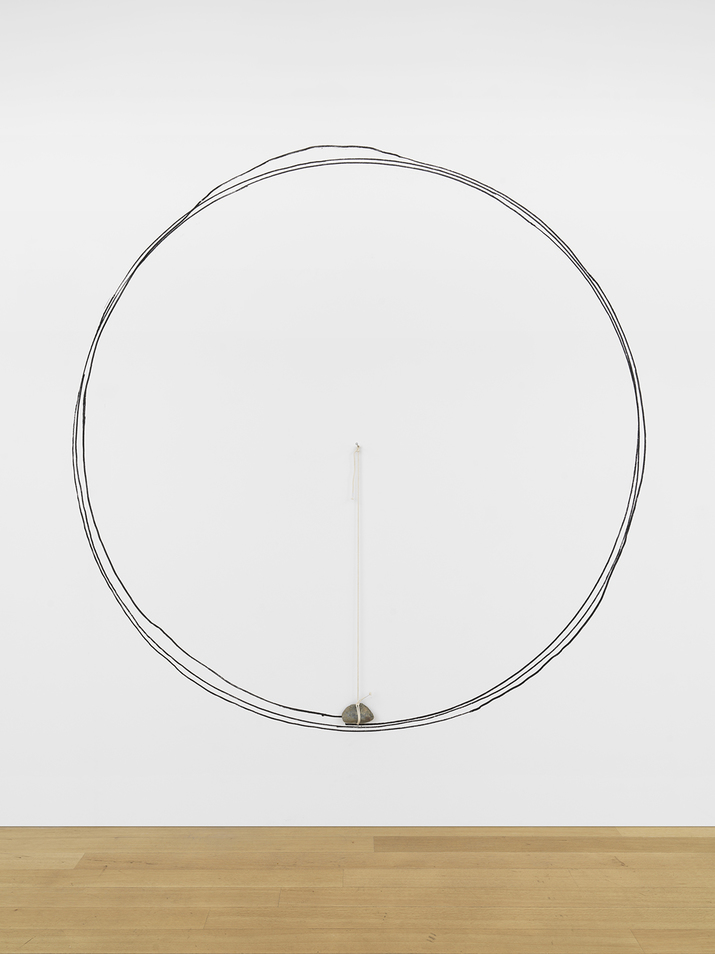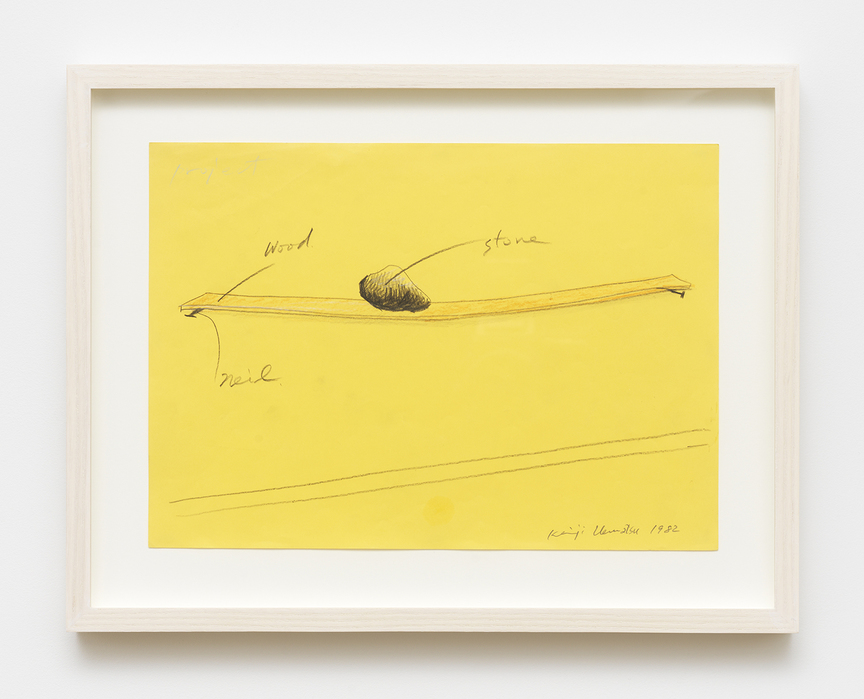-
From Current Issue
-
- Editor’s Letter Fire in the Heart
- Reviews I Gusti Ayu Kadek Murniasih
- Reviews 11th Seoul Mediacity Biennale: “One Escape at a Time”
- Dispatch Networked China
- One on One Monira Al Qadiri on Yukio Mishima
- Essays The rise of independent art spaces in pandemic-era Shanghai
- Features Tuan Andrew Nguyen
- Table of Contents
- Web Exclusives
- Archive
- Subscribe

R
E
V N
E
X
T
Installation view of KEIJI UEMATSU’s “Invisible Force” at Simon Lee Gallery, New York, 2019. All images courtesy the artist and Simon Lee Gallery, New York / London / Hong Kong.
Keiji Uematsu’s elemental artwork draws upon fundamental materials to uncover latent everyday forces, such as pressure and heaviness. Sheets of copper, steel wire, stone, and cloth all come into play in the minimalist works displayed at “Invisible Force,” Simon Lee Gallery’s small exhibition devoted to the Japanese conceptual artist. In fact, the artist’s first solo show in the United States, which included new and old pieces spanning his five-decade career, revealed an oeuvre characterized by its consistency and cohesiveness.
Uematsu is a minor figure associated with “Mono-ha” (which translates to “School of Things”), a shortlived movement that lasted roughly from 1968 to 1973 in Japan. This was a time of rampant postwar industrialization on one hand, and growing protests against the US-Japan Security Treaty and the Vietnam War on the other; many artists thus sought new aesthetic practices to respond to the vastly transformed milieu. For their part, Mono-ha artists like Uematsu or the Korean-born Lee Ufan made simple sculptures and installations out of basic, untransformed matter. Take One Stone (2019), which was the first thing a viewer sees walking into the gallery. In this piece, a stone dangles from a piece of string that is nailed to the wall, at the center of a near-perfect circle inscribed in charcoal. Like other Uematsu works, One Stone begs for patience, all the better to contemplate what it reveals: the technical and mathematical precision of the circle; gravity’s pull on the stone; the relationship of the space contained inside and outside the circle. These revelations seem so refreshingly foundational that they wouldn’t feel out of place in a creative school lab experiment.
Next to One Stone were two black-and-white photographs: Horizontal Position and Vertical Position (both 1973). Presented as a diptych, they document a project Uematsu conducted in a gallery entraceway at the Kyoto Municipal Museum of Art. In Vertical Position, Uematsu, whose back is turned to the camera, lifts a piece of plywood above his head and touches the top of the entrance. Located at the center of the entryway, Uematsu and the wood form a line neatly bisecting the area within the doorframe into two smaller rectangles. In the other photo, Uematsu balances remarkably in a horizontal position. With his arms outstretched and his feet extended, Uematsu’s body fits within the width of the doorway like a wedge, impishly defying gravity. There is something playful about these photos capturing bemusing physical acts, the straight presentation of which recalls the deadpan films of Buster Keaton, the silent comedian known as “The Great Stone Face.”
Humor can be found elsewhere in Uematsu’s work. Located on a small patch of one wall were several sketches entitled Project Drawing (1982–2018). These unadorned diagrams are deceptive, revealing as little as the resultant contraptions that Uematsu constructs, such as Floating Form – Red (2018), an abstract sculptural composition of a red cone, a rock and a small steel rectangle. In another work, a set of 16 postcards from the “Floating Stone” (2017–18) series, the pesky, hovering mineral intrudes in several scenes. There it is on the moon; trying and failing to blend in with the other rocks making up a zen garden; and conspicuously in front of the Arc de Triomphe. It’s a shame, however, that it was a little difficult to view these postcards, which were placed on a back wall behind where the gallery receptionist sat. This unfortunate placement was ironic for such a show dedicated to an artist whose main focus has been to render the invisible visible.
Despite its occasionally ineffective arrangement and modest scale, “Invisible Force” was
a perfectly fine primer on Uematsu. As an artist who creates not by transforming objects,
but by combining them in their natural states, Uematsu makes what at first looks straightforward. But there’s more than meets the eye, for Uematsu tests the viewer’s ability to spot his concerns—tension, gravity, and the relationship between space and shape—most of which are hiding in plain sight. The calm, persistent viewer will also see another side of the artist—one that exudes a sly, dry humor.
Keiji Uematsu’s “Invisible Force” is on view at Simon Lee Gallery, New York, until April 26, 2019.
To read more of ArtAsiaPacific’s articles, visit our Digital Library.










